Pelargonium is a perennial plant that has many forms - grassy, shrubby and succulent. An exotic flower, found in almost any apartment, hit the windowsills from South Africa and is often mistakenly called geranium, which is actually cultivated exclusively in the garden.
Material Content:
Pelargonium: common species, varieties and the nuances of their cultivation
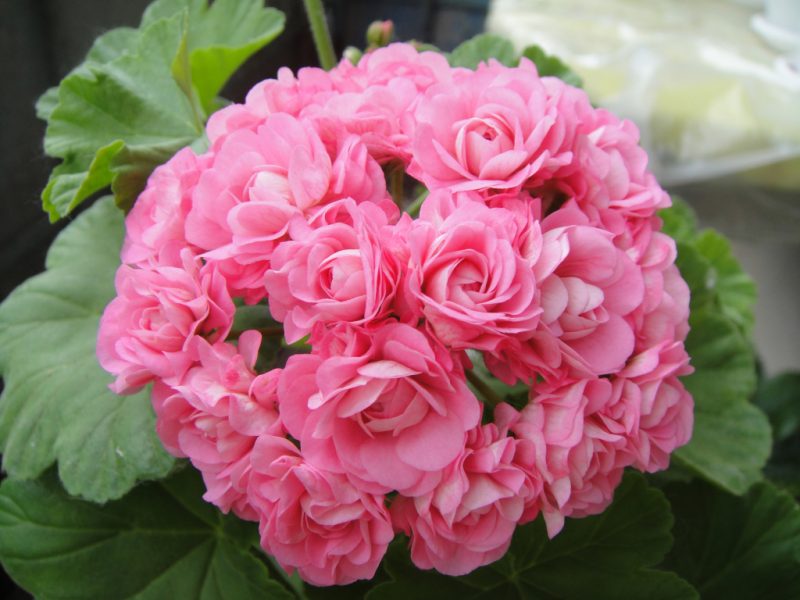
The popular potted flower is loved by gardeners for such features:
- drought tolerance;
- long flowering period;
- a variety of shapes and sizes of flowers;
- undemanding to a high level of air humidity.
In the wild, the genus from the Geranium family has about 350 species, of which only a few are cultivated in culture.
Pelargonium is zonal
The most popular and numerous species, numbering more than 75 thousand varieties. The name of the variety is due to the non-standard color of the lowered sheet plates - they have a clearly distinguishable zone.

Varieties are most often classified by the number of inflorescences (simple. Terry, semi-double) and the shape of the flower:
- Rosaceae - a group with flowers, like a rose, appeared in culture at the end of the 18th century. Bright representative - Appleblossum Rosebud.
- Tulip-shaped - a characteristic feature of a densely flowering group are flowers in the form of unopened tulip buds.
- Carnations - thanks to carved petals, large flowers are similar to inflorescences of garden carnations.
- Stellate - the flowers and leaf plates of the group have a pointed shape, which became the cause of the name.
- Cactus-like - a rare group with elongated, twisted petals resembling cactus dahlias.
Royal pelargonium
The most capricious species represented by branching bushes up to half a meter high. Powerful shoots during the flowering period, lasting up to 4 months, are crowned with large flowers with corrugated edges of the petals, painted in white, burgundy and purple with streaks.
Ampelic pelargonium
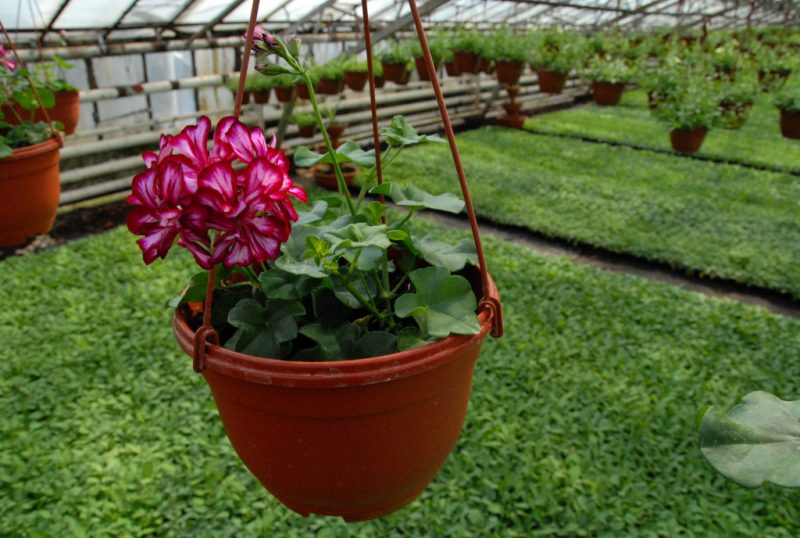
A species with hanging shoots up to 90 cm in length is represented by such a spectacular and decorative subspecies as Pelargonium ivy, often used for landscaping balconies and terraces. When flowering in plants, cactus-shaped and star-shaped flowers of various colors can be noted.
Indoor geraniums "Angels"
Hybrids are obtained as a result of crossing pelargonium curly and royal. Unlike the royal pelargonium, hybrid plants have an ampelous form of a bush, smaller sizes of flowers and leaf plates.
Succulent Pelargonium
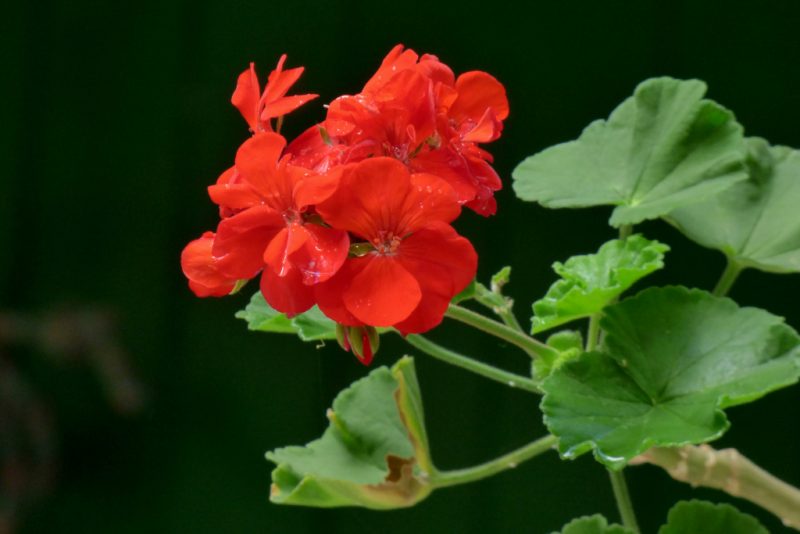
African representatives of this group have a variety of shapes, sizes and colors. However, they also have a common, characteristic feature, consisting in thick stems intended for the accumulation of moisture.
Fragrant pelargonium
A species that combines varieties with fragrant leaves that have different aromas - peach, pineapple, grapefruit and others. This feature has become the reason for the popularity of the flower, since simple, small flowers of the variety do not represent special decorative value.
Indoor Geraniums “Unicums”
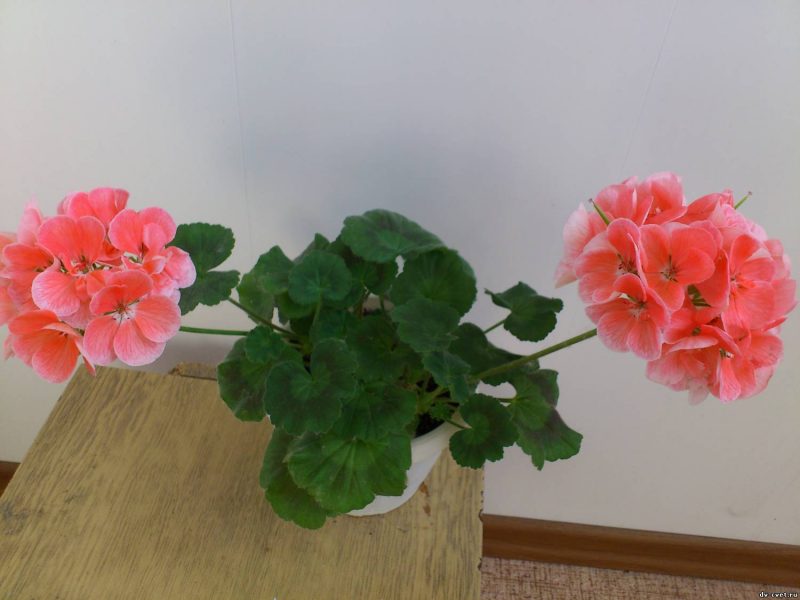
In the culture, obtained by crossing the royal and brilliant pelargonium, the hybrid has been cultivated since the 18th century. Bushes that branch poorly without outside interference are crowned with medium-sized flowers of various colors.
Breeding
An abundantly blooming flower can be propagated both seed and vegetatively.
How to grow from seed?
When choosing this method, we must not forget that pelargonium from seeds does not preserve the varietal characteristics of the maternal specimen from which the seed was collected.
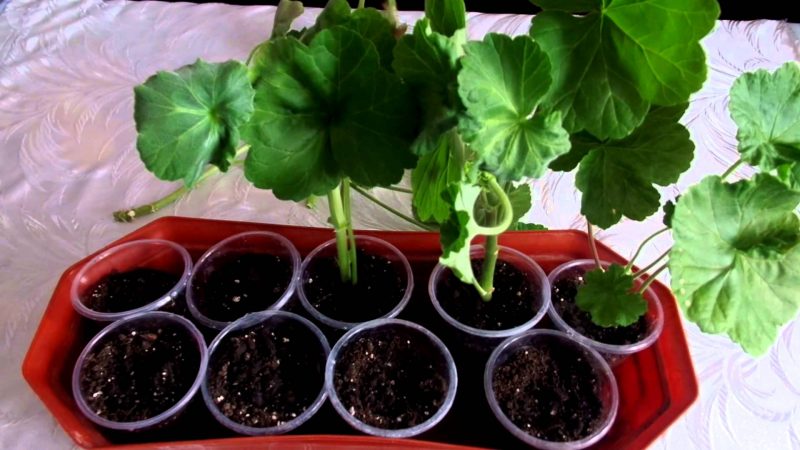
The procedure is carried out as follows:
- A low capacity is filled with a substrate of soddy soil, peat and sand in equal parts.
- The substrate is moistened with a spray gun.
- Seeds are distributed over the surface of the soil mixture, slightly crushed by sand and covered with a film.
- With proper seeding and maintenance, seedlings appear after 15 days, after which there is no need for shelter.
- Strong seedlings dive into separate containers, of which, when they also become small, are transplanted into pots with a diameter of 9 cm.
Propagation by cuttings
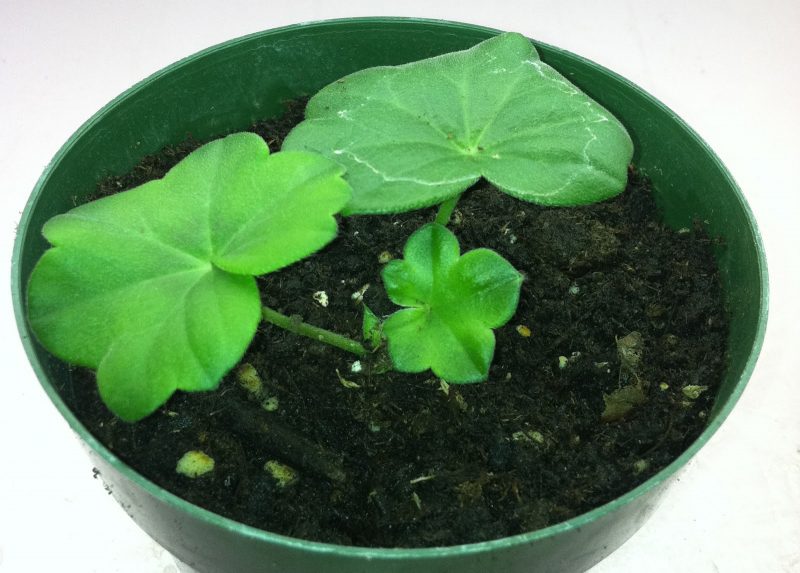
The most effective and popular method of propagation is cuttings, in which:
- At the end of winter or summer, apical cuttings with 3-5 leaf plates are cut at an angle.
- The cuttings are kept in air for several hours to dry.
- Sliced areas are sprinkled with charcoal and treated with a growth stimulant.
- Prepared planting material is vertically buried in a moistened substrate of sand, peat and sod land in equal proportions.
- The containers move to the windowsill with bright light, where they are systematically moistened with a spray bottle.
- After a month, the cuttings take root and can be planted in individual pots.
Advice! In order for the bush to grow lush, it is worth pinching the plant immediately after rooting.
Home Care
In order for an exotic plant to please the grower with prolonged and abundant flowering, it is necessary to carry out comprehensive care for pelargonium.
Lighting and location
Pelargonium is so photophilous that it even needs open sun. If possible, you can place a flower pot on the windowsill of the south window, and in the summer, move it to fresh air - a balcony, a street.
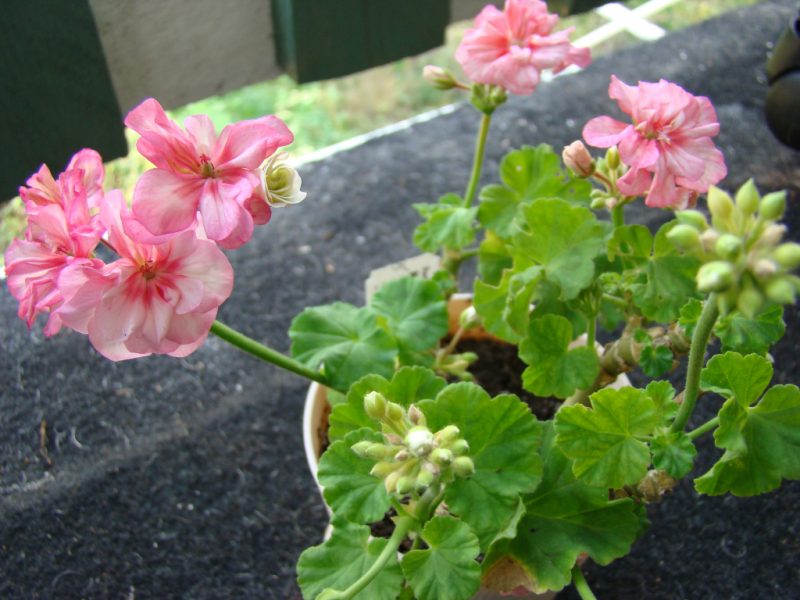
Important! Despite the photophilicity, pelargonium also grows normally near the northern windows, but under the condition that it is provided with a long daylight hours, which in winter is only possible with the installation of fluorescent lamps.
Soil and pot requirement
Pelargonium undemanding to fertility and aeration of the soil.
He feels well on the ground with a neutral and slightly alkaline reaction, which can be achieved by adding ash. A pot with good drainage for the plant is selected with a small diameter so that the roots are close to the wall. The tight capacity allows you to get a magnificent flowering, which is impossible to wait in a spacious pot.
Temperature and humidity
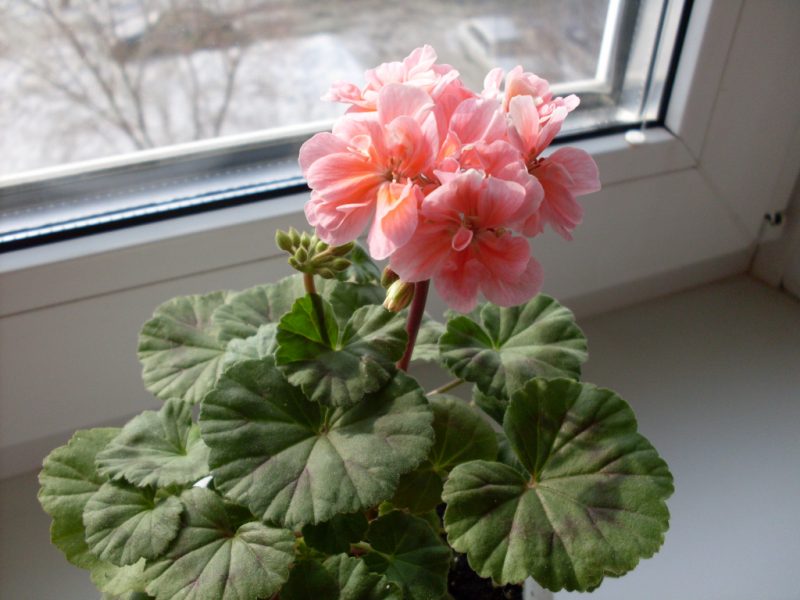
During the year, the temperature regime for pelargonium should vary depending on the phases of flower development:
- In the period of active growth, which occurs in spring-summer, the flower is contained at a temperature of 22-25 ° C.
- In the resting phase, temperature values drop to 10–13 ° C.
Spraying pelargonium is not required. It can easily withstand being in dry air, except for the only variety - royal pelargonium. When growing plants of this species, it is worth placing a container with water nearby or installing a stationary air humidifier.
Watering a plant
A drought-tolerant plant does not like waterlogging of the soil, therefore, in the summer, each new portion of the water is poured out under the crop only after the earthen coma has dried on ⅔. In winter, watering is carried out in such a way as to simply prevent the roots from drying out.
Fertilizer and fertilizer
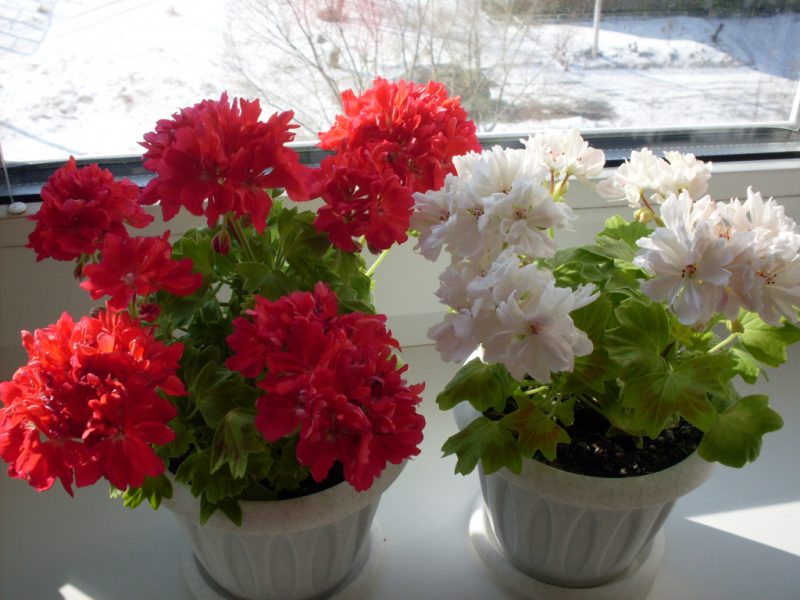
Since soil fertility is not crucial for the full development of pelargonium, the plant is fed only 2-3 times over the entire season. For top dressing, liquid mineral fertilizers are used for flowering plants, which include phosphorus and potassium. Organic fertilizers with an easily accessible form of nitrogen should not be added due to the high risk of burns from the roots of the plant.
Pruning

To obtain a lush bush, shoots are annually shortened to 2-3 internodes. Yellowed and dried leaf plates are removed with a sharp knife so that the base of the stalk remains on the shoot. After the procedure, the cut sites are disinfected with charcoal or activated carbon.
Attention! Do not rush to throw away the trimmed shoots, they can be used as apical cuttings for propagation.
Transfer
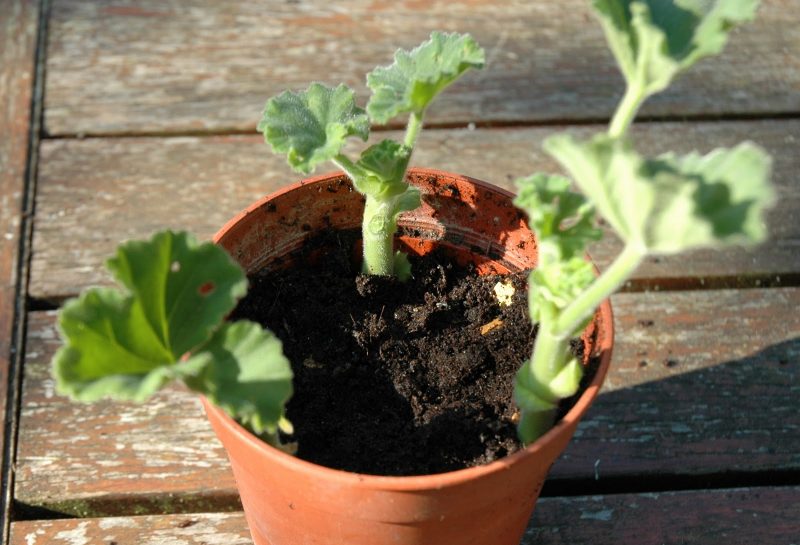
The frequency of transplantation depends on the age of the plant:
- Young specimens are transplanted annually.
- Adult plants are subject to the procedure after the appearance of roots in the drainage holes.
The procedure is carried out according to the standard algorithm:
- A pot of slightly larger diameter is selected in comparison with the previous one.
- A good drainage layer is placed at the bottom, preventing root rot from developing.
- Drainage is crushed by the soil onto which the flower with an old earthen lump passes.
- After 14 days, the flower is fed with phosphorus-potassium fertilizers with a small addition of nitrogen to stimulate branching.
Care for geraniums in the fall, preparation for winter
In order for a delicate flower to please the grower with lush flowering, he needs to ensure a state of rest, for which the culture is preparing in the fall.
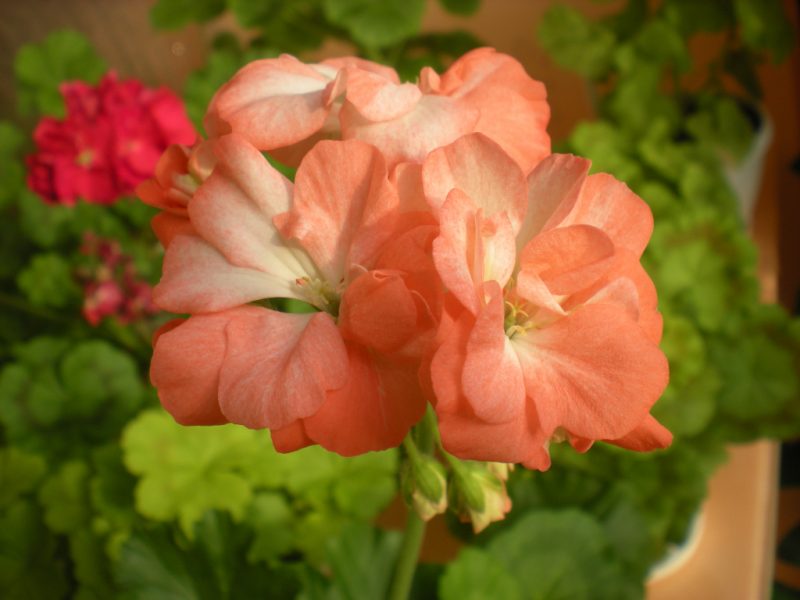
Before the onset of cold weather, the plant moves to a cooler place with diffused light, after which watering is reduced and all yellowed and dried leaves are removed.
Pest and Disease Control

Delicate, beautiful bushes of an exotic plant are susceptible to such diseases:
- blackleg;
- gray rot;
- rust;
- mosaic.
If the first three are to be treated with fungicides, then the last viral disease cannot be cured. When patterned spots appear, the affected specimen should be burned, and the container should be decontaminated.
Pests rarely feed on plants, but sometimes whiteflies and aphids can be seen on leaf blades and shoots. Cope with harmful insects will help spraying the pelargonium with an insecticidal solution.
Why does yellow, dry, pelargonium not bloom?
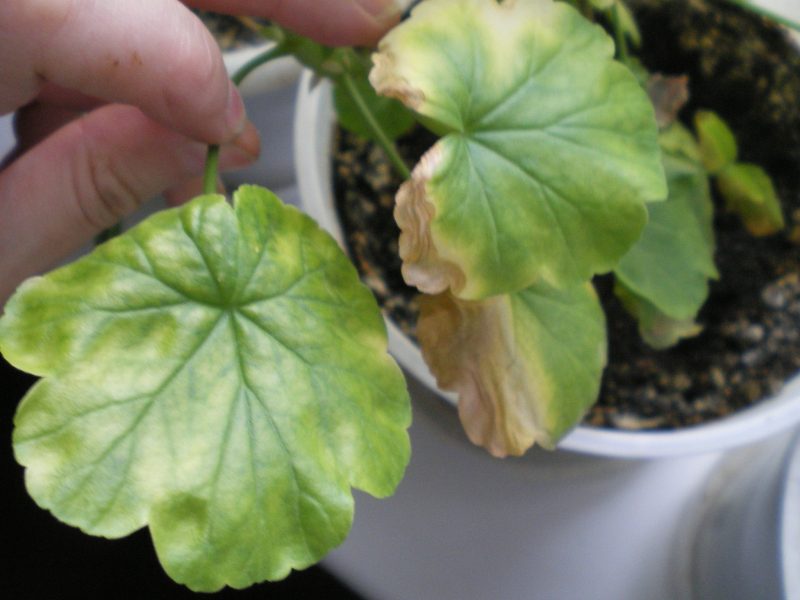
When cultivating an undemanding flower, some problematic questions may arise:
- Pelargonium does not bloom. If during the inspection of the plant there are no manifestations of diseases or pests, the reason lies in the absence of a dormant phase, during which the plant had to rest and gain strength for the new season.
- The tips of the leaf plates, which at the same time turn yellow, dry. A similar situation is observed in plants suffering from soil moisture deficiency.
- The lower tier of leaf blades turns yellow and begins to rot. The problem is caused by an excess of moisture in the soil and the beginning of the development of rot. In a similar situation, the affected plants are removed, and the sections are necessarily treated with a fungicidal solution to stop the development of a fungal disease.
- The central stem of the plant blackens. A sign of the development of the disease is a black leg, the causative agent of which is a fungus.
Thus, to become the owner of a lush and long-flowering densely leafy bush is quite simple if you follow all the recommendations for caring for an exotic plant.












